- Activities for Kids

6 Glow-in-the-Dark Science Experiments to Try Tonight
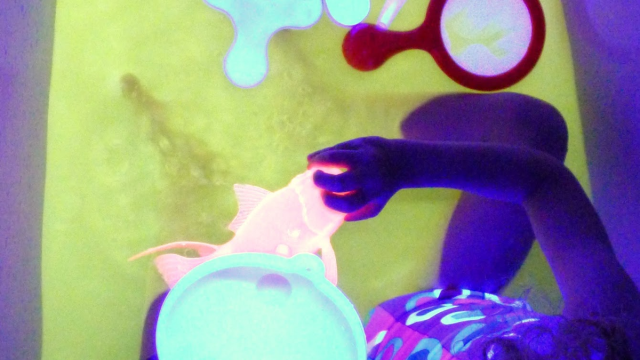
We’ve got glow-in-the-dark science worthy of any home laboratory
Calling all mad—we mean mom—scientists (and daring dads, too)! Try these six glow-in-the-dark science experiments for kids after the sun goes down: we promise they will light up your night. For more projects, check out our ultimate list of science experiments for kids .
Don’t miss any of these experiments! Save this list to Pinterest by clicking here.
Glowing Bicycle Spokes

If you're looking for a fast fix on fun, snap a few glow sticks and affix them to the spokes of a bike. When it gets dark, turn the kiddos loose on their wheels and enjoy an eerily dazzling light display. If you want to up the creativity quotient, try rearranging the glow sticks to make new patterns. Just remember to attach them well, as they have a way of taking flight!
The Science Lesson: Sensory Memory Riddle us this: Why do the three or four glow sticks you affixed to the bike spokes give the appearance of one solid line while the wheels are spinning? It's not because you're seeing the trailing lights from the glow stick. You are experiencing something known as iconic memory, which is sensory memory—or the shortest-term memory you have—that allows your mind to store an image for the few moments your brain needs to process what it has seen.
Glowing, Smoking, Bubbles
Add a little dry ice to bubble solution and the contents of an activated glow stick and get ready to rock the glow-in-the-dark scene in your neighborhood. Owlcation whipped up an awesome glow-in-the-dark science experiment to create glowing bubbles , and The Maker Mom thought to add dry ice to the same experiment here . The bubbles are out of this world—they glow and rise from the smoke. Naturally, we recommend an adult to handle the dry ice (skin contact can burn) and supervise this experiment.
The Science Lesson: Sublimation When a substance passes directly from a solid phase to a gas phase without ever becoming a liquid, it sublimates. Dry ice sublimates to gas, and the bubbles encapsulate the gas. Activated liquid from the glow stick adds to the excitement and is an example of a chemiluminescent, or a light that is produced as an energy byproduct when a chemical reaction takes place.
Glowing Pumpkin Guts Slime

For all you gore-lovers, this experiment by Little Bins for Little Hands is low on trickery and high on thrills. We used it for our inspiration, then added a little glow stick juice to the mix. Why convert pumpkin guts into a slimy putty when you can convert them into a slimy, glowing putty? Using nothing more than the contents of a glow stick, glue, and starch, you'll have a perfectly putrid pumpkin concoction in no time.
The Science Behind the Spooky: Polymers and Non-Newtonian Fluid The white glue that's used as a base in this pumpkin slime is a polymer or a large chain of molecules made up of smaller units that repeat themselves. Liquid starch changes the structure of the glue's molecular chain, making it thicker, and turning it into a non-newtonian fluid. A non-Newtonian fluid is neither a true liquid nor a true solid. You can pick it up like a solid; however, it will begin to flow like a liquid (especially when heated) and will also take the shape of its container.
Glowing Bathwater
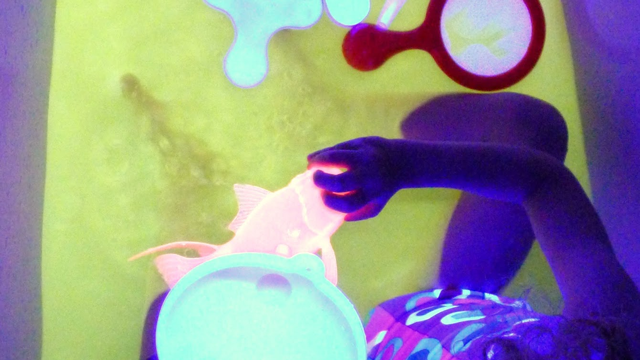
With all the options for making something glow by using the contents of a glow stick out there, we loved finding Fun at Home with Kids' recipe for glowing water that uses nothing but ground-up vitamin B-50 and a black light. And since it's not sticky and non-toxic, this makes the perfect lure for getting your bitty bats into the bathtub after a full day of haunting.
The Science Lesson: Phosphors versus Chemiluminescence Vitamin B-50 is a phosphor, or a member of a group of substances that radiate visible light after being energized by a light source, such as the UV radiation from a black light. This particular glow is different from the light created by chemiluminescence—that is, the light is emitted as a product of a chemical reaction—which you find in a glow stick.
Glowing Oil and Water Experiment

We all know that oil and water just don't mix. But what happens when you make them glow, add kids, dim the lights, and fill their brains with words like "density" and "polarity"? Magic. That's right—Pure. Magic. We love the tutorial over at Growing a Jeweled Rose , and the best part about it is how you can turn your oil and water experiment into a DIY lava lamp when you're through.
The Science Lesson: Density and Polarity An object's density—or how tightly packed together its molecules or atoms are—is a predictor of whether it will float or sink. Water molecules are more dense than oil molecules, and will always sink below oil. Additionally, water and oil have different polarities—or charges. Since water has both a negative and a positive charge, water molecules will attract other water molecules.
Glowing Sidewalk Chalk
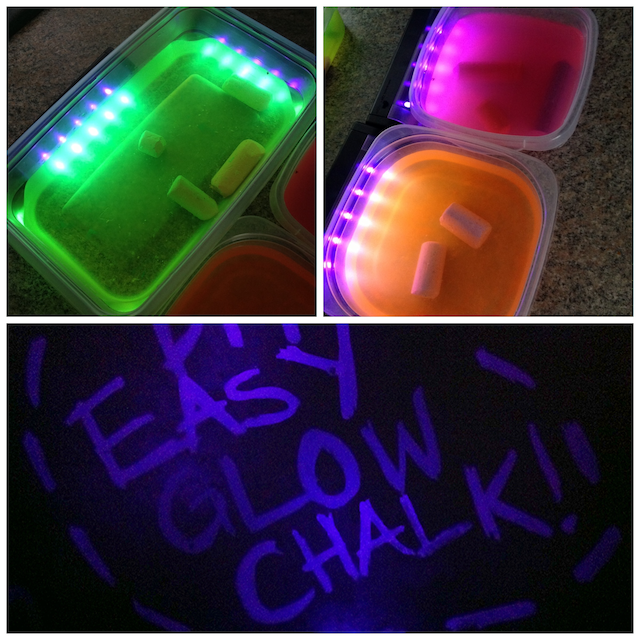
If you're really looking for some nighttime fun, you can't go wrong with this glowing sidewalk chalk. and then have them look out their windows before bedtime. This is a great one for National Night Out in August. Johanna at My Crazy Blessed Life inspired us to make our own glow-in-the-dark chalk, and we followed her recommendation to soak the chalk for two days before kicking up the fun factor with a black light.
The Science Lesson: Absorption and Properties of Salt Chalk is a salt, and salts are all distinguished by their property to absorb water. So when you let a stick of chalk soak in glowing water overnight, it will not only absorb water but also the phosphorescent properties of the glowing agent in the water.
Related: 13 Fall Science Experiments Perfect for Kids
Need some fresh ideas?
Subscribe to our weekly newsletter for expert parenting tips and simple solutions that make life instantly better.
By subscribing you agree to Tinybeans Terms and Privacy Policy
Related reads

Why Are Gen Z Kids Covering Their Noses in Family Photos?

Screen Time for Babies Linked to Sensory Differences in Toddlerhood, Study Shows

Kids Shouldn’t Have to Finish Dinner to Get Dessert, Dietitian Explains

The Questions Parents Should Be Asking Their Pediatrician—but Aren’t

6 Better Phrases to Say Instead of ‘Be Careful’ When Kids Are Taking Risks
- your daily dose

- and connection

- Your daily dose

- Science, Tech, Math ›
- Chemistry ›
- Projects & Experiments ›
15 Fun Glow in the Dark Black Light Projects
Krisztian Hazi/EyeEm/Getty Images
- Projects & Experiments
- Chemical Laws
- Periodic Table
- Scientific Method
- Biochemistry
- Physical Chemistry
- Medical Chemistry
- Chemistry In Everyday Life
- Famous Chemists
- Activities for Kids
- Abbreviations & Acronyms
- Weather & Climate
- Ph.D., Biomedical Sciences, University of Tennessee at Knoxville
- B.A., Physics and Mathematics, Hastings College
There are numerous exciting science projects that you can try where you'll make things glow in the dark using a black light or ultraviolet lamp. Here are some fun glowing projects to try. Most of these projects glow due to fluorescence , though some projects involve phosphorescent materials that glow on their own, but much more brightly when exposed to a black light .
Glowing 'Neon' Sign
Form your name or any word you like with plastic tubing filled with a glowing chemical you prepare yourself. This is a safe and economical alternative to a neon sign.
Glow in the Dark Mentos Fountain
This is a lot like the Mentos and soda fountain except you replace the diet soda with a common drink that glows when exposed to black light.
Glowing Water
There are a couple of different ways you can make water glow under a black light. Give it a try and then use the glowing water in a fountain or to use in other black light projects.
Glowing Jell-O
Some foods glow in the dark. Regular gelatin will not glow when exposed to a black light, but you can substitute another liquid for the water to make a treat that glows while you eat it.
Glow in the Dark Crystal Geode
This crystal geode that you make from common household materials will glow as soon as you turn off the lights. If you add a black light, then the glow will be much more intense.
Glowing Slime
Glowing slime is non-toxic and easy to make. The glowing slime is phosphorescent, meaning it will glow for several minutes to several hours after you turn out the lights. However, it will glow very brightly when exposed to ultraviolet light, such as from a black light.
Glowing Alum Crystals
Alum crystals grow quickly and easily. While some crystals can't be made to glow, these will pick up a luminescent chemical so that they will respond to a black light.
Glowing Crystal Ice Ball
There are several ways to make ice that will glow when illuminated by a black light. If you freeze the ice into a sphere, you'll get a sort of glowing crystal ball.
- Glowing Bubbles
If you can blow bubbles , then you can blow bubbles that glow under a black light. Standard bubble solution will not glow, but that is easy to fix!
Glowing Jack-O-Lantern
What's creepier than a flickering jack-o-lantern? How about one that emits a ghoulish glow without the fire? Make a pumpkin glow; recharge or brighten the glow with a black light.
Glow in the Dark Ice
It's easy to make ice cubes that will glow bright blue under a black light, plus the ice is safe to use in drinks.
Glowing Printer Ink
Make homemade glowing ink that you can use in your printer to make glow in the dark letters, signs, or pictures. It's easy to do and works on all kinds of paper or even for making iron-on transfers for fabric.
Glowing Flowers
Have you ever wanted to make a real flower glow in the dark? Now you can! There are multiple ways you can make a flower glow using common everyday materials.
Glowing Hands
Make your hands glow bright blue! There are a few different ways to do this, plus the same technique works on other skin, too.
Tiger Stripes on Your Body
Humans can have tiger stripes! Unless you have a certain skin disorder or are a chimera, you can't ordinarily see the stripes. They become visible under ultraviolet light.
- How to Make Glowing Water
- Glow Party Ideas
- How to Make Glow in the Dark Nail Polish
- Top Halloween Chemistry Projects
- Take Your Volcano Science Project to the Next Level
- Glow in the Dark Pumpkin Instructions
- How to Make Glowing Printer Ink
- How to Make Glow-in-the-Dark Alum Crystals
- How to Make a Glowing Flower
- Make an Easy and Fun Glow in the Dark Lava Lamp
- Gifts for Science Geeks and Nerds
- Laundry Detergent Glowing Skull
- Fun Bubble Science Projects
- Crystal Projects Photo Gallery
- Special Effects Science

Glow in the Dark Science Halloween Experiments
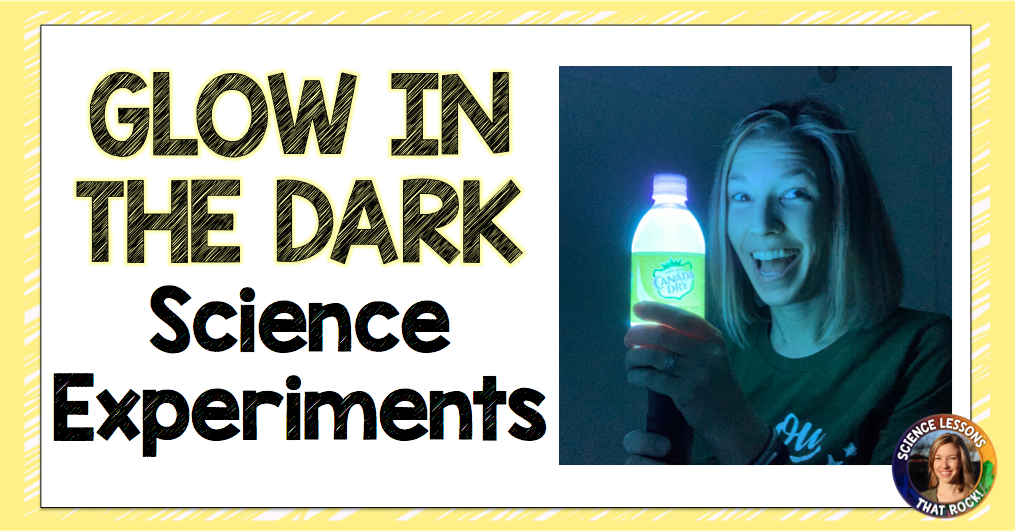
OOBLEK! Ooblek is super fun to make when learning states of matter. Is it a solid? Is it a liquid? (It’s a colloid). To make ooblek, you normally mix 1 part water to 2 parts cornstarch. Sub out tap water for tonic water and now you have a glowing non-Newtonian fluid. Around Halloween we call them “ghost guts!”

- Read more about: Experiments , Holidays


Hi, I'm Becca!
Search the site, browse by category.
- Back to School
- Biochemistry
- Body Systems
- Classification
- Classroom Decor
- Classroom Management
- Distance Learning
- End of the School Year
- Experiments
- Field Trips
- For NEW Teachers
- Formative Assessment
- Media in the Classroom
- Microscopes
- Photosynthesis & Respiration
- Plate Tectonics
- Sustainability
- Teacher Tips
- Weather and Climate
Get Freebies!
You might also like....
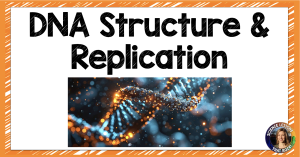
Teaching DNA Structure and Replication just got easier
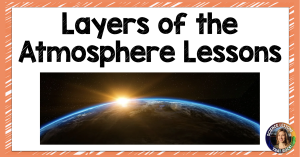
10 Atmosphere Lessons for High School

Read Aloud Closure Assignments

Want a fun way to practice science vocabulary? Try out seek and finds!

Privacy Overview
Free Shipping on pigment orders over $89 (Domestic). NO FREE SHIPPING ON MOLD ORDERS.
We ship pigments worldwide! Overnight is not available on weekends.

- Pigments & More Pigments by Color Black Blue Bronze Brown Copper Gold Green Grey / Silver Pink Purple Orange Red White Yellow Specialty Pigments Ghost Pigments Pastel Series Hue Series Opulent Series Neon Pigments Glow in the Dark Accessories Mixing Sticks Jars
- Pigment Pastes Pigment Pastes Sets 5 Color Paste Set 7 Color Neon Paste Set Pigment Pastes by Color Neon Pastes White Pastes Black / Grey Pastes Blue Pastes Brown Pastes Gold / Silver / Copper Green Pastes Orange Pastes Purple Pastes Red / Pink Pastes Tan / Beige Pastes Yellow Pastes Goose Pigment Pastes (NEW!!) Goose Pastel Pigment Pastes Goose Colorshift Pigment Pastes Goose Metallic Pigment Pastes Goose Shimmer Pigment Pastes
- Build Your Own Sample Set
- Basic Sample Packs
- 15 Color Sample Packs
- 20 Color Sample Packs
- 30 - 120 Color Sample Packs
- Colorshift Sample Pack
- Neon Sample Pack
- Glow in the Dark Sample Packs
- Ghost Sample Packs
- Ultrashift & Ultraflake Sample Packs
- How to Build Your Own Sample Set
- 10 Pack - Build Your Own Sample Set
- 20 Pack - Build Your Own Sample Set
- 30 Pack - Build Your Own Sample Set
- 50 Pack - Build Your Own Sample Set
- 100 Pack - Build Your Own Sample Set
- 10 - Build Your Own Colorshift Set
- Charcuterie Board Molds
- Square Silicone Molds
- Rectangle Silicone Molds
- Round Silicone Molds
- Hexagon Silicone Molds
- Large Silicone Molds
- Coaster Silicone Molds
- All Silicone Molds
- Colorshift Pigments
- Ultrashift Pigments
- Neon Pigments
- Glow in the Dark
- Metallic Flakes
- Metallic Shimmer
- Irregular Flakes
- Ultra Flakes
- Buy Catalog
- View Catalog
- Eye Candy Banner
- Color Chart Summer 2024
- New Arrivals
- Eye Candy Mugs
- Pigment Information List
- Informational Videos
- Ethics Statement
- Rewards Program
- Affiliate Program
- Wholesale Login
- Nov 2024 - Ana Hefco - Ana Hefco Art
- Sept 2024 - Chris Forcenito - CF Woodworks
- August 2024 - Scott Lanier - Square and Level
- July 2024 - Justin Czar - Liberty Lumber Products
- June 2024 - Melanie B - Melanie B's Creative Studio
- May 2024 - Nate Shockley - Shocks Functional Art
- Apr 2024 - Carey Gerst - Blu Cherry Art Studio
- Mar 2024 - Justin Salley - Justin Sally Art
- Feb 2024 - Greg Goedert - STL Woodworking
- Jan 2024 - Rachel Wu - Crafted by Rachel
- Dec 2023 - Jake Thompson - Saturday Cartoons
- Nov 2023 - Mike Epps - Epps Creations
- Oct 2023 - Nita Huizar - Nita Fluid Woodworks
- Sept 2023 - Jessica Salley - Polly Prissy Pants
- Purchase Gift Card
- Redeem or Check Balance
- Pigments & More
- Pigments by Color
- Grey / Silver
- Specialty Pigments
- Ghost Pigments
- Pastel Series
- Opulent Series
- Accessories
- Mixing Sticks

- Pigment Pastes
- Pigment Pastes Sets
- 5 Color Paste Set
- 7 Color Neon Paste Set
- Pigment Pastes by Color
- Neon Pastes
- White Pastes
- Black / Grey Pastes
- Blue Pastes
- Brown Pastes
- Gold / Silver / Copper
- Green Pastes
- Orange Pastes
- Purple Pastes
- Red / Pink Pastes
- Tan / Beige Pastes
- Yellow Pastes
- Goose Pigment Pastes (NEW!!)
- Goose Pastel Pigment Pastes
- Goose Colorshift Pigment Pastes
- Goose Metallic Pigment Pastes
- Goose Shimmer Pigment Pastes

- Sample Sets
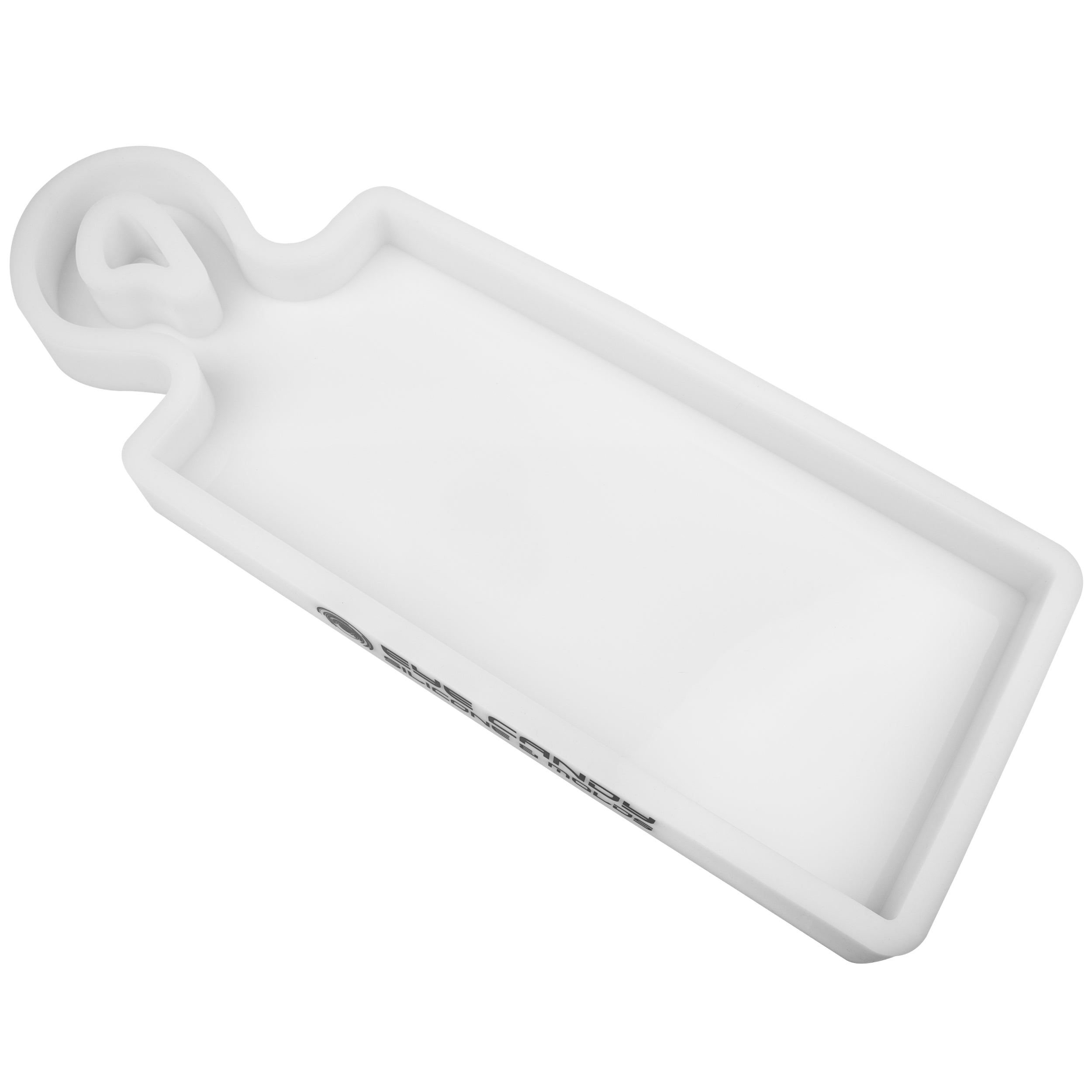
- Silicone Molds

- Catalog / Banners / Poster

- Apparel / Mugs

- Pigment Information
- Makers of the Month
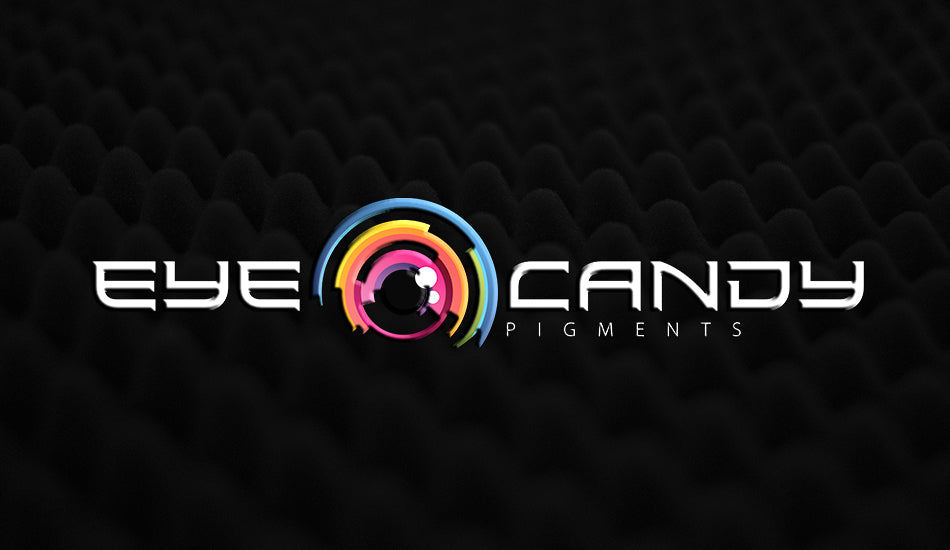
Glow-in-the-Dark Science Experiments To Try Tonight
Welcome to the exciting world of luminescent science experiments, where learning goes hand-in-hand with fun and creativity. These activities offer a captivating and hands-on approach to understanding fundamental scientific concepts. Stimulate curiosity and wonder with these glow-in-the-dark science experiments to try tonight.
Glowing Volcanic Eruption
Prepare for an explosion of fun with a glowing volcano eruption! This activity is a twist on the timeless baking soda and vinegar volcano experiment. Simply add a few drops of glow-in-the-dark paint to your volcano structure before adding the vinegar. When the lights are turned off, the reaction will create a stunning, luminous eruption!
Understanding The Chemistry Lesson
This experiment is a great opportunity to explain the concept of an acid-base reaction. When the vinegar (acetic acid) and baking soda (a base known as sodium bicarbonate) mix, they react to form carbon dioxide gas, water, and a salt, resulting in the eruption-like bubbles and foam.
Glow-in-the-Dark Slime
Creating and playing with slime is a fun way to explore chemistry and physics, which is why you should try this glow-in-the-dark science experiment tonight. This slime requires a few simple ingredients: clear or white school glue, water, borax, and, of course, glow-in-the-dark paint.
Combine the glue and water in a bowl, then add a small amount of borax to initiate the slime-forming reaction. Stir in the glow-in-the-dark paint, and you have a squishy, stretchy, glowing slime that promises hours of fun!
Tip: Make Your Own Luminous Paint
Make luminous paint or glue by mixing in glow-in-the-dark mica powder , following the manufacturer’s instructions. Use your mixture in artwork or science experiments, and experiment with creating different colors by adjusting the pigment concentration.
Homemade Lava Lamp
Experience the magic of a homemade glow-in-the-dark lava lamp, a perfect blend of science and art. This fun experiment requires a clear container, fizzing tablets like Alka-Seltzer tablets, water, vegetable oil, food coloring, and glow-in-the-dark pigment powder.
Start by filling the container a quarter of the way with water, then add vegetable oil, leaving about an inch of empty space at the top of the container. Then, add a few drops of food coloring and sprinkle in the pigment powder.
Finally, add a teaspoon (or one quarter) of the fizzing tablet. The lava lamp will bubble for a few minutes, and you can restart the reaction by adding more fizzing tablets. This is a fun way for kids to see how substances with different densities don’t mix.
The fizzy eruption of a glowing volcano, the squishy texture of glow-in-the-dark slime, and the captivating motion of a luminous lava lamp each teach fundamental scientific concepts. Make learning an adventure with these illuminating activities!
- Share Facebook
- Pin it Pinterest
Our Mission
"At Eye Candy™ our vision is to create a better everyday experience for the many people who use our pigments and products. Our business idea supports this vision by offering the best possible service, selection, quality, and value."
Customer Service
This is and always has been our #1 priority. Unfortunately it's just a saying for most companies in our industry. Call us, email us, message us on, and you'll receive a reply. Fastest turnaround shipping in the business.
Quality Products
Have you heard the saying "You get what you pay for"? We are not the cheapest but the quality of our products speaks for itself. Made for automotive, soaps, epoxy resin, waxes, acrylic painting, candles, & much more!
Subscribe today to hear first about our sales
INFORMATION
- Privacy Policy
- Terms of Service
Popular Items
- Popular Sample Sets
Get in touch
- +1-386-281-3463
- American Express
- Diners Club

- Science Notes Posts
- Contact Science Notes
- Todd Helmenstine Biography
- Anne Helmenstine Biography
- Free Printable Periodic Tables (PDF and PNG)
- Periodic Table Wallpapers
- Interactive Periodic Table
- Periodic Table Posters
- Science Experiments for Kids
- How to Grow Crystals
- Chemistry Projects
- Fire and Flames Projects
- Holiday Science
- Chemistry Problems With Answers
- Physics Problems
- Unit Conversion Example Problems
- Chemistry Worksheets
- Biology Worksheets
- Periodic Table Worksheets
- Physical Science Worksheets
- Science Lab Worksheets
- My Amazon Books
How to Make Glowing Bubbles

It’s easy to make glowing bubbles that either really glow in the dark or else glow under a black light. Here are several recipes for glowing bubbles, a look at the pros and cons for each recipe, and a video showing what you can expect from each technique.
Glow in the Dark vs Glows Under Black Light
Bubbles that glow when all lights are off do so via phosphorescence, while bubbles that need black or ultraviolet light glow from fluorescence . In both cases, electrons get excited by energy from light and then emit photons (the glow) when they return to a more stable state. But, phosphorescence releases light for seconds to hours (depending on what you use), while fluorescence is so fast that you need a constant light source.
When you blow bubbles that glow in the dark, you still need light to charge the bubble solution. Use either bright sunlight, a bright flash light, or a black light. Then, turn out the lights and blow the bubbles. Or, if you prefer, blow these bubbles under a black light, which helps them glow even brighter. On the other hand, bubbles that only glow under black light need a black light, which emits ultraviolet light. For these bubbles, leave the black light on.
How to Make Bubbles That Really Glow in the Dark
Make bubbles glow when the lights are out by combining bubble solution with phosphorescent (glow) powder or liquid. Using store-bought bubble solution is fine, otherwise mix your own using dishwashing liquid and light corn syrup or else water, dishwashing liquid, glycerin, and sugar. The advantage of buying the liquid is that it comes with a wand. The disadvantage is the homemade bubble solution makes stronger bubbles. But, you can always add a bit of corn syrup or sugar to a commercial product and thicken it.
Make Bubbles Glow Using Glow Pigment
Use glow-in-the-dark pigment, paint, or glue for glowing bubbles.
- Bubble solution
- Glow pigment, paint, glue, or other true glow in the dark products
- Charge the glowing product with bright light so you can see what you’re working with. Then, dim the lights a bit so you have a sense of the final effect.
- Mix together the bubble solution and enough glow product so you get a nice glow.
- Again, use a bright light and charge the glow. Then, turn out the lights and blow glowing bubbles.
There is no perfect ratio of ingredients because it depends on the products you use. Basically, you want a bright glow and a bubble solution that still blows bubbles!
Pros : It’s easy, truly glows in the dark, glows brightly, and you can use any color of glow product you like. Cons : Most products thicken the bubble solution and make blowing bubbles harder. Clean-up can be messy, especially with glue or paint. Tips : Use a black light for extra-bright bubbles. Make certain you use a non-toxic glow product (most are non-toxic).
Make Glow in the Dark Bubbles Using Glow Sticks
Glow sticks glow in the dark because of a chemiluminescence reaction. Mixing the liquid inside the tubes with bubble solution lets you blow bubbles that glow in the dark.
- Glow sticks
- Pour a bit of bubble solution into a small bowl.
- Activate glow sticks, cut the ends off them, and dump the liquid into the bowl with the bubble solution.
- Mix the bubble solution and glow stick fluid and then blow bubbles.
There is no perfect ratio of glow stick fluid to bubble solution. Basically, just cut open and add glow stick juice until you like the effect.
Pros : It’s a quick and easy solution, available in a wide range of colors, and does not require any light source. Cons : The two liquids don’t mix very well, the resulting glow is dim, and the glow only lasts for a few minutes before weakening. Clean-up is messy. While technically non-toxic, glow stick liquid is not something you want near your mouth for blowing bubbles. Tips : These bubbles glow much brighter under a black light.
How to Make Bubbles Glow With a Black Light
The glow-in-the-dark products are phosphorescent and don’t need a black light (although keeping one on makes them brighter). However, some of the brightest bubbles use fluorescent pigment and require a black light to glow. The other big advantage is that these recipes result in a bubble mixture that is easy to use for blowing bubbles.
Glowing Bubbles Using Fluorescent Highlighter Ink
Fluorescent highlighters glow very brightly under a black light and their ink combines with bubble solution to make brilliant glowing bubbles.
- Fluorescent highlighters
- Black light
- Test the highlighters using the black light. Yellow and green almost always glow. Whether or not other colors work depends on the brand you’re using.
- Pour a bit of bubble solution into a bowl.
- Use tweezer or pliers and pull the ink pad out of the highlighter . If you have trouble pulling it out, carefully cut the pen in half and extract the ink pad.
- Place the ink pad in the bubble solution. Swish it around and mix the glowing liquid with the bubble solution. Ideally, turn on the black light so you can see what you’re getting.
- Make sure the black light is on and blow glowing bubbles!
Pros : These bubbles glow very brightly. There are multiple color options. The liquid is non-toxic. Cons : Highlighter ink stains surfaces. Use a cleaner that contains bleach to remove color from surfaces. The other disadvantage is that you need a black light. Tips : Blow these bubbles outdoors or in a bathroom so you don’t “highlight” your whole house.
How to Make Glowing Bubbles With Tonic Water
Tonic water contains quinine, which glows vivid blue under a black light. It’s edible and easy to clean up.
- Tonic water (diet tonic water recommended, because it’s not sticky)
- Turn on the black light. Mix tonic water into bubble solution so you have a good glow.
- That’s it! Go blow glowing bubbles!
Pros : This glowing bubble recipe is completely non-toxic, very bright, and easy to clean up. Cons : It only glows blue and it requires a black light. Tips . Use diet tonic water instead of the regular stuff so the bubble residue won’t be sticky. Tonic water dilutes the bubble solution, but you can counteract this by mixing up bubble solution from scratch:
- 1 cup tonic water
- 2 tablespoons liquid dishwashing detergent
- 1 tablespoons glycerin
- 1 teaspoons sugar
Related Posts
Playing With Rain
Explore the World Around You
Glow In The Dark Experiments
Share with your friends!
From making and playing with gooey slime to the classic baking soda volcano experiment, these glow in the dark experiments take ordinary fun science experiments to the next level!
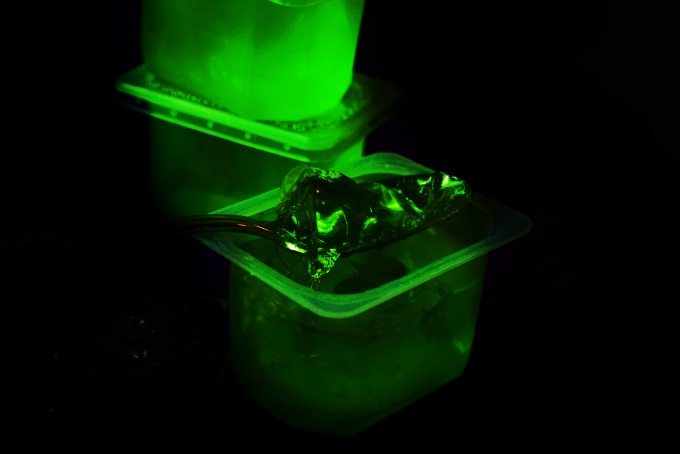
The best part about these experiments is how simple and easy they are for adults and kids of all ages.
And most of these glowing activities only require a few common household supplies!
Table of Contents
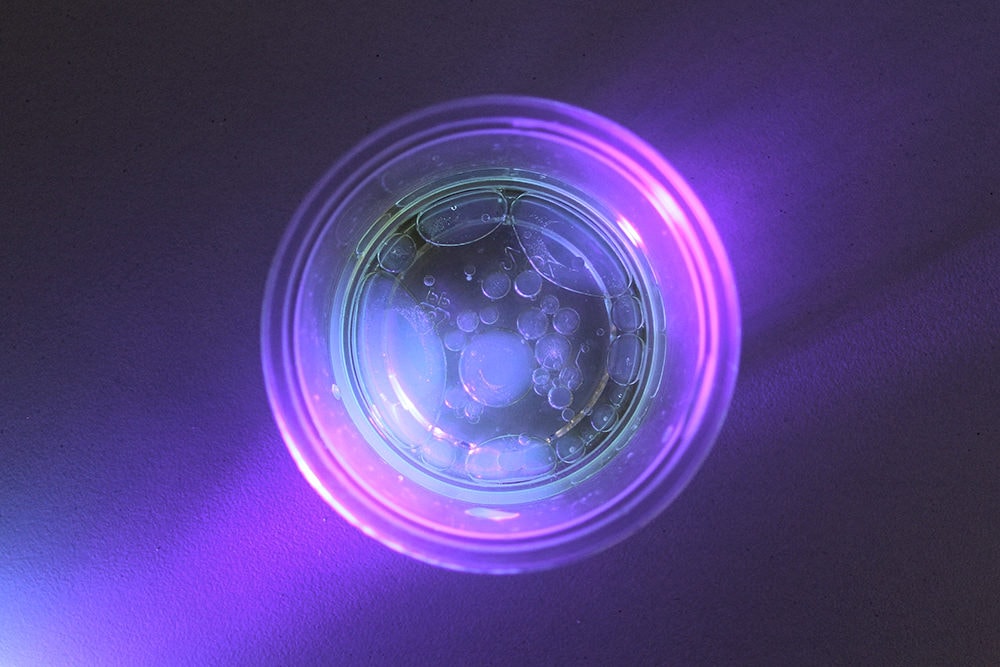
- Glowing Water And Oil Mixing Experiment – This is a fun and taste-safe way to teach kids that water and oil don’t mix along with a cool glowing twist!
- Glow In The Dark Erupting Volcano – The classic baking soda and vinegar volcanic reaction with glow in the dark lava!
- Easy Glow In The Dark Bubbles – What kid doesn’t love bubbles…especially these ones that glow in the dark!?

- Glow In The Dark Jello – Turn ordinary jello into a glow in the dark yummy snack or spooky halloween treat with this cool trick!
- Glowing Sensory Rice – A glowing tub of rice will keep your kids entertained for hours! The adults might even think this is pretty fun!
- Glowing Egg Experiment – Turn a raw egg into a glow in the dark bouncy egg!

- Glow In The Dark Sensory Bottles – Use these fun glow in the dark bottles as lanterns on camping trips, or even night lights for the kids!
- Rainbow Glow Moon Dough – Enjoy playing with the silky smooth texture of this moon dough and then turn off the lights and watch it glow!
- Glow Salt Circuit – What’s more exciting than creating a glowing circuit with salt and electricity!?
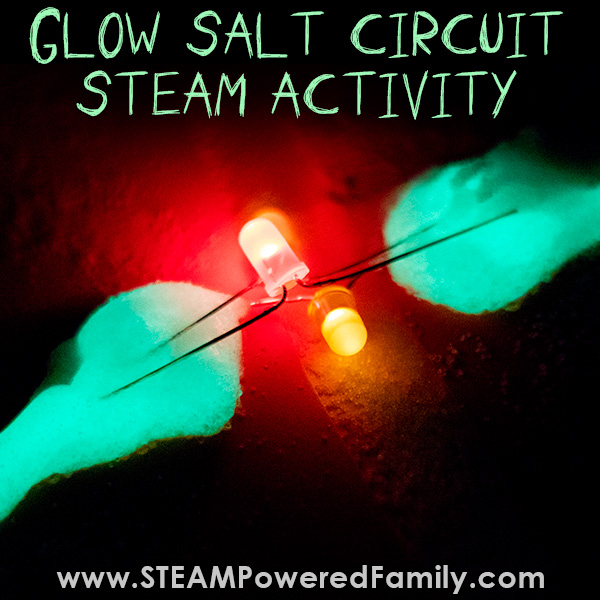
- Glow In The Dark Space Painting – This is the perfect way to combine art and science for your future astronauts!
- 2 Ingredient Glow In The Dark Slime – One of the best tried and true methods to succesfully and easily make great slime…and it even glows!
- Homemade Glow In The Dark Slime – This slime will keep your kids entertained day and night with its magical glowing powers!

- Taste-Safe Glow In The Dark Slime – This slime glows in the dark AND is made from edible ingredients so you don’t have to worry about your toddlers taste testing it!
- How To Make Water Beads Glow – Use household supplies to turn ordinary water beads into magical, glowing water beads!
- Glowing Ice Cubes – Kids will love this glowing blue ice! They can even stack the ice cubes and try to build Elsa’s ice palace!

- Glow In The Dark Paint Recipe – Let your kids use thier imagination to paint something creative that will glow in the dark too!
- Fluorescent Slime That Glows – Use psyllium husks and vitamin tablets to create this non-toxic glowing slime that provides hours of entertainment!
- Glow In The Dark Bowling – Use the science of glow sticks to create an awesome nightime bowling activity for the whole family!
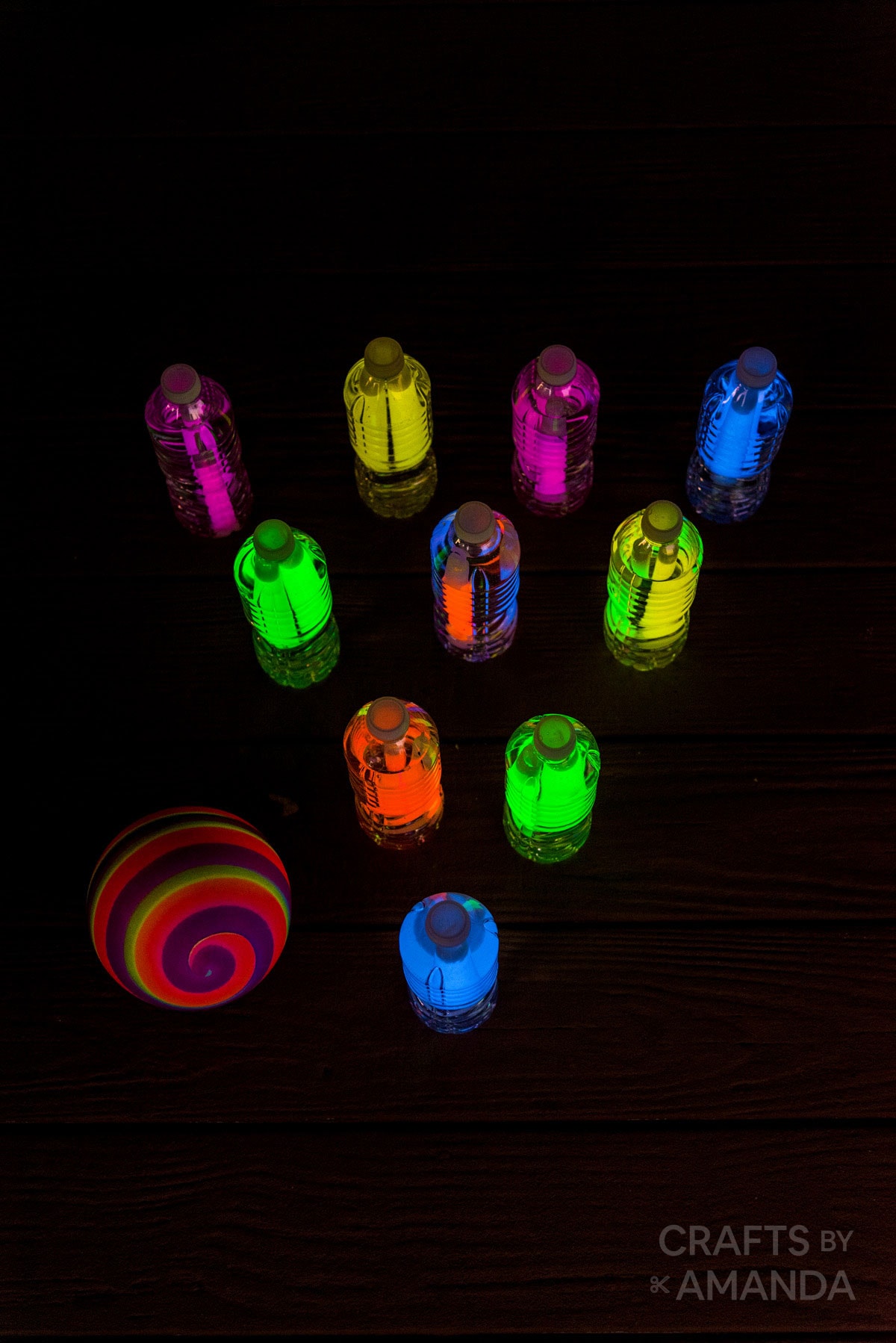
More Resources:
- Halloween Science Experiments
- Fun Water Experiments
- Plastic Bottle Experiments
MORE ABOUT PLAYING WITH RAIN
LET’S CONNECT
Search for more ideas, create at your own risk.
All content on this blog was created for inspiration and entertainment purposes. Creating anything with the suggested tools, products or methods, is under your own risk!

COMMENTS
Owlcation whipped up an awesome glow-in-the-dark science experiment to create glowing bubbles, and The Maker Mom thought to add dry ice to the same experiment here. The bubbles are out of this world—they glow and rise from the smoke. Naturally, we recommend an adult to handle the dry ice (skin contact can burn) and supervise this experiment.
There are numerous exciting science projects that you can try where you'll make things glow in the dark using a black light or ultraviolet lamp. Here are some fun glowing projects to try. Most of these projects glow due to fluorescence, though some projects involve phosphorescent materials that glow on their own, but much more brightly when exposed to a black light.
Some common household chemicals can also affect this beverage's glow. In this science activity, you will make tonic water glow by using a black light, and then you will add a little bleach to the water. ... Objects that glow in the dark hold a special place in the imagination of both children and adults. ... semiconductor, and pharmaceutical ...
The science behind this glow in the dark is quite interesting. When we expose the glow in the dark paint to light, molecules in the paint absorb photons in the visible region. ... There is something about making a project or experiment glow that just makes it so much more exciting and fun! I hope you enjoyed all of our Glow in the Dark ...
It glows under a black light. You can mix it into paint and draw spooky glow-in-the-dark pictures. Make glow-in-the-dark slime by adding some powder to regular slime. Or even dust it onto pumpkins to make them glow. Use the powder to make a homemade glow-in-the-dark lava lamp. Learn about fluorescence while having fun making things glow.
This simulates osmosis and how cells swell in hypotonic solutions and shrink in hypertonic solutions.To make your rubber egg glow, use a 50-50 mixture of vinegar and tonic water. (You could even be sneaky and add tonic water to a random few beakers from the class and freak them out by telling them they must have gotten radioactive eggs).
ChildCareEd aims to inspire budding scientists with a variety of STEAM (Science, Technology, Engineering, Arts, and Mathematics) experiments that harness the magic of glow-in-the-dark phenomena.From simple at home activities to more elaborate #classroom projects, these experiments are designed to spark curiosity.. Glow-in-the-Dark Experiments for Mini Mad Scientists
Glow-in-the-Dark Slime. Creating and playing with slime is a fun way to explore chemistry and physics, which is why you should try this glow-in-the-dark science experiment tonight. This slime requires a few simple ingredients: clear or white school glue, water, borax, and, of course, glow-in-the-dark paint.
Make Glow in the Dark Bubbles Using Glow Sticks. Glow sticks glow in the dark because of a chemiluminescence reaction. Mixing the liquid inside the tubes with bubble solution lets you blow bubbles that glow in the dark.
Glow In The Dark Experiments. Glowing Water And Oil Mixing Experiment- This is a fun and taste-safe way to teach kids that water and oil don't mix along with a cool glowing twist!; Glow In The Dark Erupting Volcano- The classic baking soda and vinegar volcanic reaction with glow in the dark lava!; Easy Glow In The Dark Bubbles- What kid doesn't love bubbles…especially these ones ...